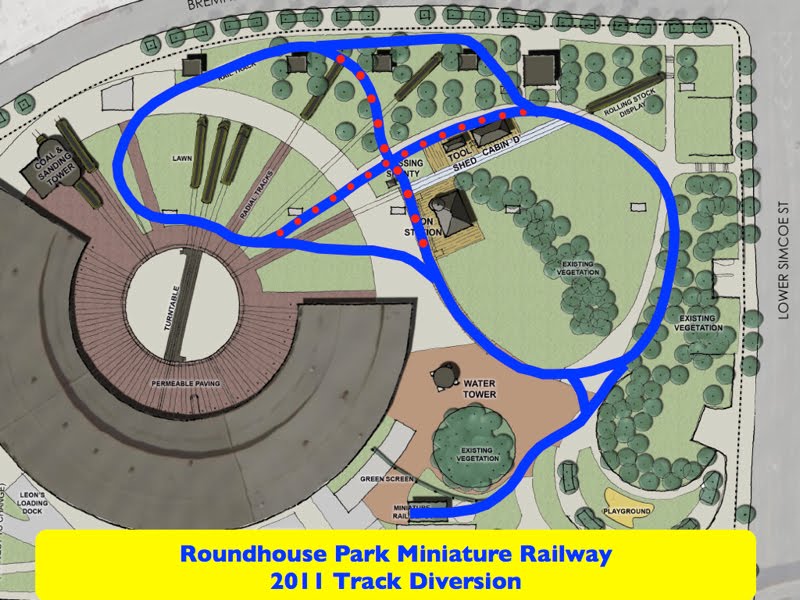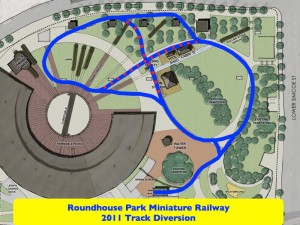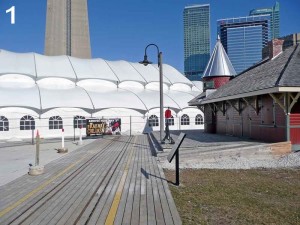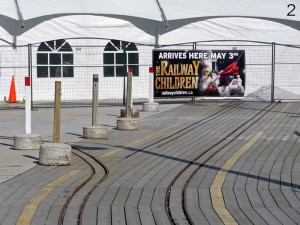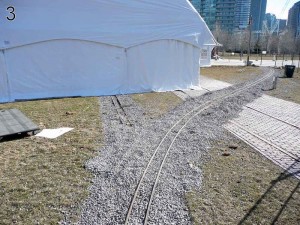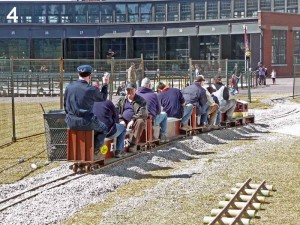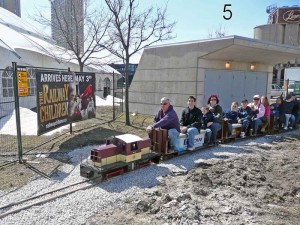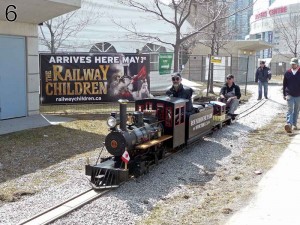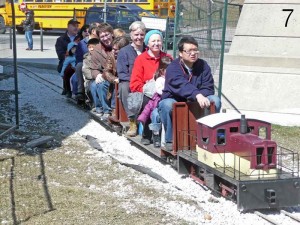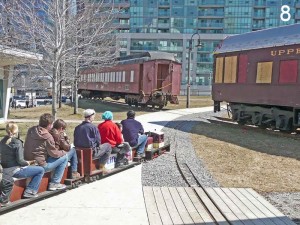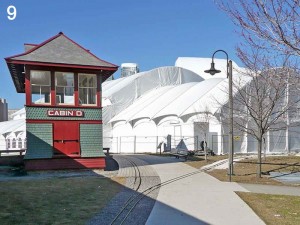The miniature railway track diversion is now operational!
Click on each image for a closer look!
One of the most frequent concerns expressed to the Toronto Railway Heritage Centre about the Railway Children production is the impact that it’s going to have on the Roundhouse Park Miniature Railway. A giant tent now sits on the north end of Roundhouse Park straddling Track 39 which will be used for staging the locomotive and carriage which is being transported from England and will be on site within a few days. In our next posting, we will provide more information on the actual engine and carriage to be used as the train in the production.
.
The train will be moved in and out of the tent using our TRHC CLC Whitcomb and our flat car as an idler car as required by the play. Stadium seating is now being constructed on either side of the track much like that used for the huge American railroad industry shows that were in vogue from the 1920s to the 1940s in Baltimore, Chicago and New York.
The solution to allow continued operation of the miniature railway was to build two diversionary tracks outside the tent on the north and south sides. The map shows the original figure-8 track plan outlined in blue. The red dots indicate the track that has been taken out of service until the end of the 2011 season. By connecting the two loops of the 8 with temporary diversion tracks, we now an operation that resembles a giant oval (or perhaps a kidney shape). The original figure-8 will be restored for the 2012 season.
For the past few weeks, a TRHC crew has been busy building the diversionary tracks. On Saturday, April 2 the track was tested with operating trains, at first empty and later with passengers made up of our volunteers and park visitors who happened to be around when the train was loaded.
#1 – Shows the Railway Children tent blocking the original main line in front of Don Station.
#2 – This is the south diversionary track angling off to the northwest on the deck in front of Don. The decking has been modified so that the new track looks like it was always there!
#3 – Shows the west end of the south diversion track with the original track disappearing under the tent. Track 40 on the right is clearly out of commission for the summer which is why the two passenger cars had to be repaired and moved out towards the end of the track before the tent could be erected.
#4 – With Greg at the throttle, a test train with the Whitcomb as motive power operates along the south diversion track on Saturday, April 2. Bob is sitting backwards and mugging for the camera. Bob has an abiding interest in railway history and enjoys replicating the experience of sitting on the observation decks that once were found on the back of old passenger trains.
#5 – Rodney operates a test train along the north diversion track paralleling Bremner Boulevard with a train load of delighted park visitors. The original track can just be made out under the fence to the left of the Railway Children banner.
#6 – Following successful test runs with the Mini-Whitcomb powering a train of passenger cars, it then pushed the Sweet Creek steam locomotive around the track with Michael occupying the engineer’s seat. Greg is actually operating the train while TRHA volunteers Ryan and Daniel follow along inspecting the track.
#7 – Ryan drives a test train up the grade from Bremner Boulevard to Cabin D. There was some initial concern that heavy trains would be able to negotiate the grade but the testing indicated that this would not be a problem.
#8 – The test train rejoins the original main line in the shadow of Cabin D. Our two Canadian Pacific passenger cars, Jackman (L) and Cape Race (R) have been stored outside on Track 40 for the summer to permit use of the roundhouse stalls for TRHC use and Railway Children production facilities. Both cars underwent extensive roof repairs during the winter.
#9 – One problem that needed to be solved was what to do when the railway track, the vast majority of which is laid on top of ground, had to cross over the concrete walkways. Clearly just attaching the rail to the concrete wasn’t a solution so steel bars were laid flat on their sides creating a smooth transition between ground and concrete and back again.
Posting and Photos by Derek Boles


